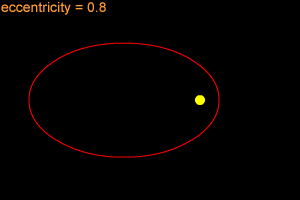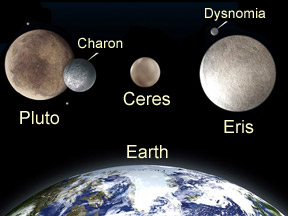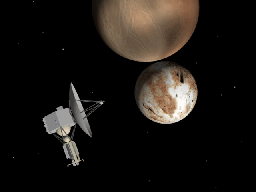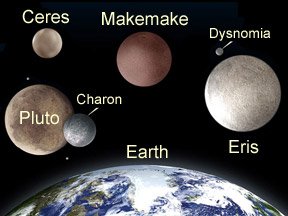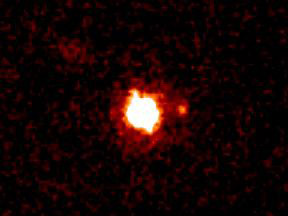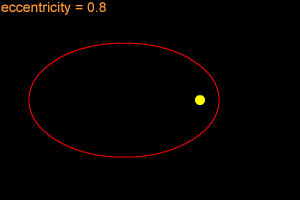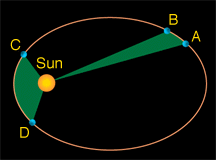Orbital Data for the Planets & Dwarf Planets
| Planet | Semimajor Axis (AU) |
Orbital Period (yr) |
Orbital Speed (km/s) |
Orbital Eccentricity (e) |
Inclination of Orbit to Ecliptic (°) |
Rotation Period (days) |
Inclination of Equator to Orbit (°) |
|---|---|---|---|---|---|---|---|
| Mercury | 0.3871 | 0.2408 | 47.9 | 0.206 | 7.00 | 58.65 | 0 |
| Venus | 0.7233 | 0.6152 | 35.0 | 0.007 | 3.39 | -243* | 177.3 |
| Earth | 1.000 | 1 | 29.8 | 0.017 | 0.00 | 0.997 | 23.4 |
| Mars | 1.5273 | 1.8809 | 24.1 | 0.093 | 1.85 | 1.026 | 25.2 |
| Jupiter | 5.2028 | 11.862 | 13.1 | 0.048 | 1.31 | 0.410 | 3.1 |
| Saturn | 9.5388 | 29.458 | 9.6 | 0.056 | 2.49 | 0.426 | 26.7 |
| Uranus | 19.1914 | 84.01 | 6.8 | 0.046 | 0.77 | -0.75* | 97.9 |
| Neptune | 30.0611 | 164.79 | 5.4 | 0.010 | 1.77 | 0.718 | 29.6 |
Dwarf Planets |
|||||||
| Ceres | 2.76596 | 4.599 | 17.882 | 0.07976 | 10.587 | 0.378 | ~3 |
| Pluto | 39.5294 | 248.54 | 4.7 | 0.248 | 17.15 | -6.4* | 122.5 |
| Haumea | 43.335 | 285.4 | 4.484 | 0.18874 | 28.19 | 0.163 | ? |
| Makemake | 45.791 | 309.88 | 4.419 | 0.159 | 28.96 | ? | ? |
| Eris | 67.6681 | 557 | 3.436 | 0.44177 | 44.187 | > 8 hrs ? | ? |
* Negative values of rotation period indicate that the planet rotates in the direction opposite to that in which it orbits the Sun. This is called retrograde rotation.
The semimajor axis (the average distance to the Sun) is given in units of the Earth's average distance to the Sun, which is called an AU. For example, Neptune is 30 times more distant from the Sun than the Earth, on average. Orbital periods are also given in units of the Earth's orbital period, which is a year.
The eccentricity (e) is a number which measures how elliptical orbits are. If e = 0, the orbit is a circle. Most of the planets have eccentricities close to 0, so they must have orbits which are nearly circular.






